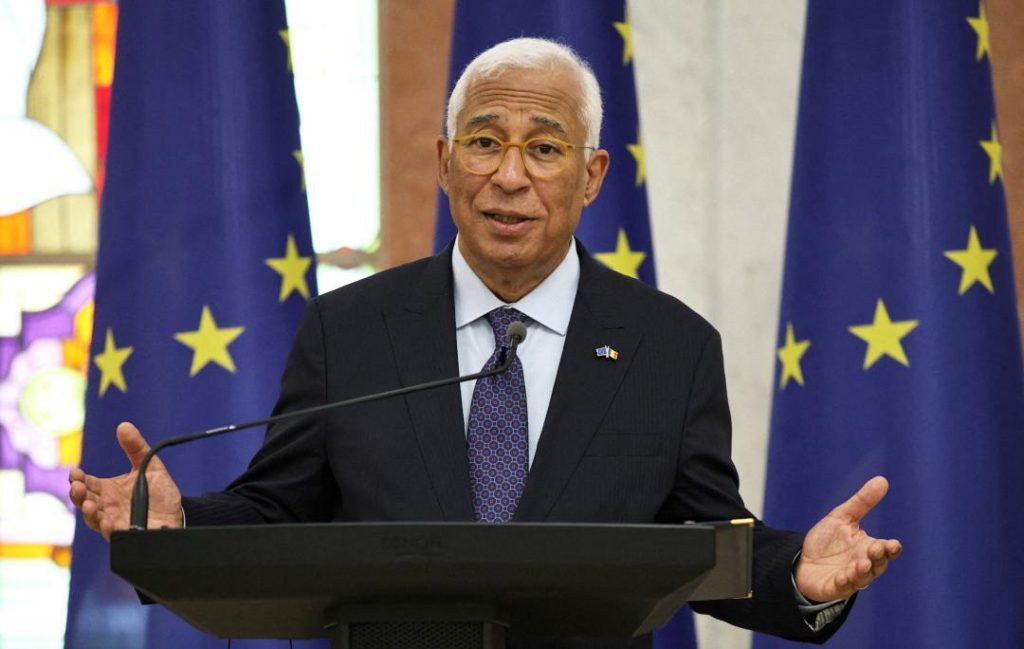
Title: No Indications Spain, Portugal Blackout a Cyberattack: EU’s Costa
A massive power outage hit Spain and Portugal on Tuesday, leaving millions of people without electricity. The European Union’s Council President, Antonio Costa, has stated that at this point, there are no indications of a cyberattack being the cause of the blackout. Costa emphasized that grid operators in both countries are working together to identify the cause of the outage and restore the electricity supply.
In a tweet, Costa wrote, “Grid operators in both countries are working on finding the cause and restoring the electricity supply. I’m in touch with Spanish President Pedro Sánchez and Portuguese PM Luís Montenegro to ensure we’re providing all necessary support.”
The power outage affected several regions in Spain, including the provinces of Galicia, Castile and León, and the autonomous communities of the Basque Country and Catalonia. In Portugal, the outage affected the northern and central regions, including the cities of Porto and Lisbon.
The cause of the blackout is still unknown, but authorities are investigating several possible explanations. Some experts have suggested that a combination of factors, including high temperatures and strong winds, may have contributed to the outage.
Spain’s Ministry of Industry, Trade, and Tourism has stated that the blackout did not affect the country’s nuclear power plants, which are designed to operate safely even in the event of an outage.
Portugal’s national grid operator, REN, has also reported that the blackout did not affect the country’s nuclear power plant, which is located in the northern region of Viana do Castelo.
The European Union has a system in place to coordinate the response to major power outages, known as the European Emergency Number Association (EENA). The EENA provides a single point of contact for emergency services across the EU, allowing for rapid and effective response to major incidents.
The EU has also established a network of experts and emergency responders who can be quickly deployed to affected areas. This network includes experts in areas such as power engineering, emergency management, and crisis communication.
In addition to the EENA, the EU has also established a system of emergency response plans that can be activated in the event of a major power outage. These plans include protocols for coordinating the response to the outage, as well as procedures for restoring power and communicating with the public.
In the event of a major power outage, the EU’s emergency response plan includes several key steps. The first step is to identify the cause of the outage and determine the extent of the damage. This is typically done by grid operators, who use specialized equipment and trained personnel to assess the situation.
Once the cause of the outage has been identified, the EU’s emergency response plan calls for the activation of emergency response protocols. These protocols include procedures for restoring power, communicating with the public, and providing support to affected areas.
The EU’s emergency response plan also includes protocols for managing the impact of a major power outage on critical infrastructure, such as hospitals, schools, and government buildings. These protocols include procedures for providing backup power to critical facilities, as well as protocols for managing the impact of the outage on the public.
In conclusion, the recent power outage in Spain and Portugal is a reminder of the importance of having a robust emergency response plan in place. The EU’s system of emergency response plans and experts is designed to quickly and effectively respond to major incidents, and the recent power outage is an example of how this system works in practice.
As Costa stated, there are currently no indications of a cyberattack being the cause of the blackout, and grid operators in both countries are working together to identify the cause and restore the electricity supply. The EU’s emergency response plan is designed to provide support to affected areas, and the recent power outage is an example of how this plan can be activated in the event of a major incident.
News Source:



